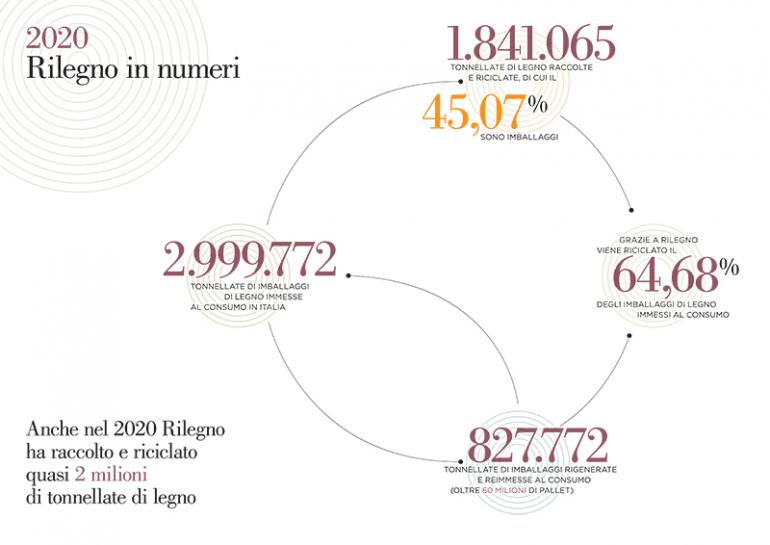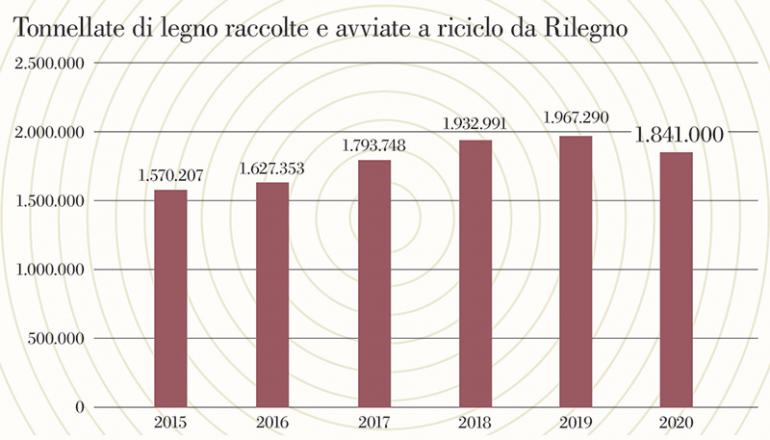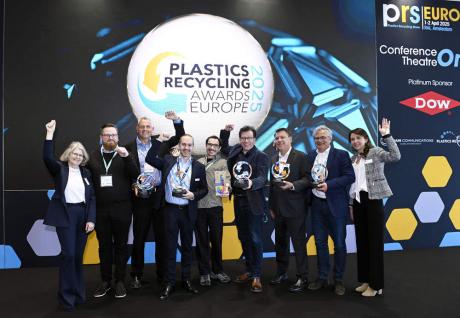The Italian wood recycling system demonstrated solidity and resilience during the year of the pandemic, guaranteeing uninterrupted collection via the 421 platforms distributed throughout the country as well as the absorption capacity of the affiliated recycling companies.
According to data published by Rilegno (Italian national wood packaging recovery and recycling consortium), a total of 1,841,000 tonnes of wood was collected and sent for recycling in 2020, just 6.4% less than the previous year. The efficiency of the system is also evidenced by the high wood packaging recycling rate (64.68%), well above the 30% target set by the European Union for 2030.
The figures for pallet reconditioning were also excellent with more than 60 million used pallets repaired and put back into operation, the equivalent of 827,000 tonnes of wood.

Wood also plays an essential role in combating climate change due to its ability to absorb carbon dioxide. Unlike processes such as waste-to-energy that release of millions of tonnes of CO2 into the atmosphere, end-of-life wood recycling ensures that the stored carbon dioxide continues to be locked in place.
The environmental effects of the Rilegno system have been measured by two research projects conducted by Milan Polytechnic. The recycling chain saved more than 1.1 million tonnes of CO2 in 2020, while the reconditioning chain saved almost 800,000 tonnes, giving a total of almost 2 million tonnes.
Separate municipal waste collection carried out through contracts in place with 4,549 municipalities with a combined population of approximately 42,700,000 inhabitants recorded a slight decrease due to the pandemic, dropping to a total of 638,000 tonnes of wood. Lombardy was the top-ranking region in terms of separate waste collection with 474,104 tonnes (26% of the total), followed by Emilia-Romagna with 252,514 tonnes and Piedmont with 165,805 tonnes.










